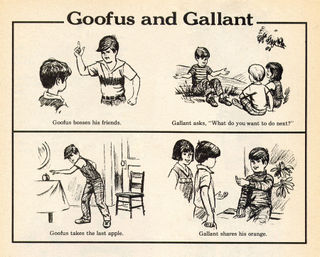Is employee communication really a 2-way street?
April 11, 2009
 Your employees are an absolutely critical audience for your organization. No brand promise gets delivered, no customer is delighted and no customer feedback flows back to you — if your employees are not inspired and feel like a vital part of the team.
Your employees are an absolutely critical audience for your organization. No brand promise gets delivered, no customer is delighted and no customer feedback flows back to you — if your employees are not inspired and feel like a vital part of the team.
So how do you make sure all of that happens? Talk to them.
It's human nature to want to be in the know. it eases worry and keeps you from making up stories in your head. Typically most employees believe that their boss could do a better job in the communication department.
Ironically, if you ask the management team (boss, owner) they'll tell you they are huge communicators and the employees know everything they could possibly want to know.
So where lies the truth?
According to a recent survey I read about on MarketingCharts.com, nearly three-fourths (71%) of US communications and human resources professionals in a recent survey say are getting the right amount of information about the current state of their company during the recession, but many would like more opportunities to use social media and have face-to-face communications with company leaders. (all data according to a survey by Heyman Associates Executive Search.)
The survey, which was conducted to gauge the effectiveness of corporate communications in today’s tough economic climate amidst repeated company failures and layoffs, found that 85% of survey respondents say their CEO, among other managers, is communicating with them, though 65% would still like more informal, in-person communication.
CEOs Stepping Up
When asked who in their company is speaking with them about the current state of affairs, respondents overwhelmingly cited their CEO:
- 85% said their CEO was speaking with them
- 43% cited their department head
- 35% cited their direct manager
- 30% mentioned the CFO
- 15% cited a human resources representative
- 5% said no one communicated with them
Among those who say nobody in the company communicates information, some have found out information about their own company in the newspaper, while others tap the grapevine, which they acknowledge is not always reliable.
Need for In-Person Communication, Social Media
Though many respondents are already receiving a large number of electronic and mass communications within their company, the survey uncovered an important need for more in-person communications.
When asked how they would improve the way they receive information about their company, a majority of professionals responded that they would like increased, informal, face-to-face communication. Out of 452 responses:
- 65% want increased informal in-person communication
- 50% want increased formal in-person meetings
- 31% want increased formal written materials
The responses also indicate a desire for more social media because of its interactive nature. Some respondents suggest that an increased mix of in-person communication and social media will create and repeat frequent and trustworthy messages, while others want the communications to better explain how any given situation affects them personally.
So…what do you think? How does your company communicate with you? or if you're the leader — how would you rate your information flow?
What's the most effective method of communicating company news, in your opinion?
More

![Reblog this post [with Zemanta]](http://img.zemanta.com/reblog_e.png?x-id=5f3ca3e6-662f-4a16-b340-d3d37aed96e6)

![Reblog this post [with Zemanta]](http://img.zemanta.com/reblog_e.png?x-id=d9e3d235-759c-4e21-a770-65c4bfd93018)

![Reblog this post [with Zemanta]](http://img.zemanta.com/reblog_e.png?x-id=e9cf4abc-6f7b-4682-a8fa-da0280e2bfc6)

![Reblog this post [with Zemanta]](http://img.zemanta.com/reblog_e.png?x-id=0f53e573-0d9d-4a8b-b907-e500167bab44)

![Reblog this post [with Zemanta]](http://img.zemanta.com/reblog_e.png?x-id=61e9e93a-c605-4955-a67e-6cdb4b879f15)


![Reblog this post [with Zemanta]](http://img.zemanta.com/reblog_e.png?x-id=83ec7825-9af2-431e-a052-3c792a4c90e0)

![Reblog this post [with Zemanta]](http://img.zemanta.com/reblog_e.png?x-id=4271899e-6370-474b-9884-c8db74fe0639)

![Reblog this post [with Zemanta]](http://img.zemanta.com/reblog_e.png?x-id=8bb25e21-a661-45cd-8218-31659966c1e4)

![Reblog this post [with Zemanta]](http://img.zemanta.com/reblog_e.png?x-id=78f9453e-4be4-4ed3-9c46-202b32fcce43)
